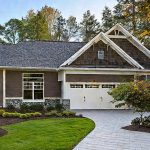Imagine a home that stays warm in the winter and cool in the summer, all without relying heavily on mechanical heating or cooling systems. That’s the power of passive solar design. By strategically incorporating architectural features and building materials, you can take advantage of the sun’s energy to regulate temperature and reduce energy consumption. In this guide, we’ll explore the principles of passive solar design and how you can apply them to create a comfortable and energy-efficient home.
The Basics of Passive Solar Design
Passive solar design is based on the simple principle of harnessing the sun’s energy to heat and cool a building naturally. It involves maximizing the use of sunlight for heating during the colder months while minimizing solar heat gain in the summer to maintain comfortable indoor temperatures.
Key elements of passive solar design include:
- Solar Orientation: Orienting the building to capture the maximum amount of sunlight throughout the day, typically with south-facing windows and minimal shading on the southern facade.
- Thermal Mass: Incorporating dense materials such as concrete, brick, or tile into the building’s structure to absorb and store heat during the day and release it slowly at night.
- Insulation: Using high-quality insulation to minimize heat loss in the winter and heat gain in the summer, ensuring a consistent indoor temperature.
- Natural Ventilation: Designing the home to facilitate cross-ventilation and airflow, allowing for passive cooling in the summer without the need for mechanical fans or air conditioning.
By incorporating these principles into your home design, you can create a comfortable living environment while reducing your reliance on artificial heating and cooling systems.
Maximizing Solar Gain
To maximize solar gain and optimize energy efficiency, it’s essential to consider the following factors:
| Factor | Description |
|---|---|
| Window Placement | Positioning windows to allow for maximum sunlight penetration during the winter months, while minimizing exposure to direct sunlight in the summer. |
| Overhangs and Shading | Using overhangs, awnings, or deciduous trees to provide shade during the summer months, preventing overheating and reducing the need for air conditioning. |
| Daylighting | Utilizing natural daylight to illuminate interior spaces, reducing the need for artificial lighting and improving overall energy efficiency. |
| Solar Collectors | Installing solar thermal or photovoltaic panels to capture and convert solar energy into electricity or hot water, further reducing reliance on non-renewable energy sources. |
By carefully planning and implementing these strategies, you can create a passive solar home that is comfortable, sustainable, and cost-effective.
Benefits of Passive Solar Design
Passive solar design offers a range of benefits for homeowners, including:
- Energy Savings: By reducing reliance on mechanical heating and cooling systems, passive solar homes can significantly lower energy bills and reduce carbon emissions.
- Comfort: Passive solar design creates a more comfortable indoor environment with stable temperatures and improved air quality.
- Durability: Building materials and features used in passive solar design are often more durable and require less maintenance over time.
- Sustainability: By harnessing renewable energy from the sun, passive solar homes contribute to a more sustainable built environment and reduce dependence on fossil fuels.
Whether you’re building a new home or retrofitting an existing one, incorporating passive solar design principles can enhance comfort, reduce energy costs, and contribute to a greener future.


